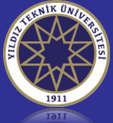| Hafta | Konular | Ön Hazırlık |
|---|
| 1 | Giriş | Ders materyali ve hedefleri tartışılacak, öğrencilerin ilgi alanları ve araştırma konuları hakkında bir fikir sahibi olunacaktır. |
| 2 | Kültürel Çalışmalar Bağlamında Tarih, Kuram ve Yöntem | Philip Smith, Cultural Theory: An Introduction (Oxford: Blackwell, 2000): 151-166. Douglas Kellner, “Cultural Studies and Social Theory: A Critical Intervention” in Handbook of Social Theory (George Ritzer & Barry Smart, eds.; London: Sage, 2003): 395-409. Stuart Hall, “Cultural Studies: Two Paradigms” Media, Culture & Society 2(57),1980: 57-72. |
| 3 | Etnografi-I: Hakikat, Nesnellik ve Geçerlik Meseleleri: M. Mead Örnek Olayı | Paul Atkinson & Martyn Hammersley, “What is ethnography?” in Ethnography: Principles in Practice (London: Routledge, 2007/3rd ed.): 1-19. Paula Saukko, “Combining Methodologies in Cultural Studies,” in Doing Research in Cultural Studies: Introducing Qualitative Methods (London: Sage, 2003): 11-35. Richard Feinberg, “Margaret Mead and Samoa: Coming of Age in Fact and Fiction,” American Anthropologist, New Series, Vol. 90, No. 3 (Sep., 1988): 656-663. Margaret Mead and Samoa (1988) [Documentary] |
| 4 | Ethnogafi-II: Katılımcı Gözlem ve Görüşmeler | Ann Gray, Research Practice for Cultural Studies: Ethnographic Methods & Lived Cultures (London: Sage, 2003): Part II (The Research Process). Paul Atkinson & Martyn Hammersley, “Oral accounts and the role of interviewing,” in Ethnography: Principles in Practice (London: Routledge, 2007/3rd ed.): 41-96; 97-120. Paula Saukko, “New Ethnography and Understanding the Other,” in Doing Research in Cultural Studies: Introducing Qualitative Methods (London: Sage, 2003): 55-73. Andy Bennett, “Rappin’ on t |
| 5 | Ethnografi-III: Düşünümsellik, Otoetnografi, Konumsallık | Catherine Kohler Riessman, “Entering the Hall of Mirrors: Reflexivity and Narrative Research,” in Anna De Fina and Alexandra Georgakopoulou (eds.), The Handbook of Narrative Analysis (Wiley, Blackwell: 2015): 219-238. Sara L. Crawley, “Autoethnography as Feminist Self-Interview,” in Jaber F. Gubrium, James A. Holstein, Amir B. Marvasti & Karyn D. McKinney (eds.), The SAGE Handbook of Interview Research. The Complexity of the Craft (SAGE, 2012): 143-159. Gillian Rose, “Situating Knowledges: Posit |
| 6 | Söylem-Giriş | Paula Saukko, “Between Experience and Discourse,” in Doing Research in Cultural Studies: Introducing Qualitative Methods (London: Sage, 2003): 74-96. Chris Barker & Dariusz Galasinski, “Tools for Discourse Analysis,” in Cultural Studies and Discourse Analysis: A Dialogue on Language and Identity (London: Sage, 2001): 62-85. Marianne Jørgensen and Louise Phillips, “The field of discourse analysis” and “Laclau and Mouffe’s discourse theory” in Discourse Analysis as Theory and Method (London: Sage, |
| 7 | Söylem Analizi-I | Marianne Jørgensen and Louise Phillips, “Critical Discourse Analysis,” in Discourse Analysis as Theory and Method (London: Sage, 2002): 60-95. Norman Fairclough, “Critical Discourse Analysis in Researching Language in the New Capitalism: Overdetermination, Transdisciplinarity, and Textual Analysis, in Lynne Young and Claire Harrison (eds.), Systemic Functional Linguistics and Critical Discourse Analysis (London, NY: Continuum, 2004): 103-122. Chng Huang Hoon, “Celebrating Singapore's Development |
| 8 | Ara Sınav 1 | |
| 9 | Söylem Analizi-II | Marianne Jørgensen and Louise Phillips, “Discursive Psychology,” in Discourse Analysis as Theory and Method (London: Sage, 2002): 96-137. Chris Barker & Dariusz Galasinski, “The Name of the Father. Performing Masculine Identities,” in Cultural Studies and Discourse Analysis: A Dialogue on Language and Identity (London: Sage, 2001): 86-121. Chris Barker & Dariusz Galasinski, “Language, Identity and Cultural Politics,” in Cultural Studies and Discourse Analysis: A Dialogue on Language and Identity |
| 10 | Tarihsel Analiz | Michael Pickering, “Engaging with History” in Michael Pickering, (ed.), Research Methods for Cultural Studies (Edinburgh: Edinburgh University Press, 2008): 193-213. Daniel L. Schacter, “On Remembering ‘A Telescope Pointed at Time’, “Searching for Memory. The Brain, the Mind, and the Past (NY: Basic Books, 1996): 15-38. |
| 11 | Kültürel tarih ve Sözlü Tarih | Alistair Thomson, “Four Paradigm Transformations in Oral History,” The Oral History Review, 34:1 (2007; published online 2019): 49-70. Alessandro Portelli, “A Dialogical Relationship: An Approach to Oral History," Expressions annual 14 (2005): 1-8. Arzu Öztürkmen, “Remembering through Material Culture: Local Knowledge of Past Communities in a Turkish Black Sea Town.” Middle Eastern Studies, 39, no: 2 (2003): 179-193. Catherine Kohler Riessman, Ch.2-3, Narrative Methods for the Human Sciences (S |
| 12 | Alımlama, Metin Analizi ve Ötesi | Paula Saukko, “Reading Ideology,” in Doing Research in Cultural Studies: Introducing Qualitative Methods (London: Sage, 2003): 99-114. Andrea Press & Sonic Livingstone “Taking Audience Research into the Age of New Media: Old Problems and New Challenges” in M. White & J. Schwoch, (eds.), Question of Method in Cultural Studies (Malden, MA: Blackwell 2006): 175-200. Stuart Hall, “Encoding, decoding,” in Simon During (ed.), The Cultural Studies Reader (London: Routledge, 1994): 90-103. |
| 13 | Soykütüksel Analiz ve Yapsöküm | Paula Saukko, “Genealogical Analysis,” (115-134) and “On Deconstruction and Beyond” (135-152) in Doing Research in Cultural Studies: Introducing Qualitative Methods (London: Sage, 2003). Ayça Alemdaroğlu, “Politics of the Body and Eugenic Discourse in Early Republican Turkey,” Body and Space 11(3), 2005: 61-76. |
| 14 | Küresel Bağlam Analizi: Politik Ekonomi, Uzam ve Ötesi | Paula Saukko, “Analysis of ‘Reality’ and Space,” (155-175) and “Studying Multiple Sites and Scapes,” (176-197) in Doing Research in Cultural Studies: Introducing Qualitative Methods (London: Sage, 2003). Paul Smith, “Tommy Hilfiger in the Age of Mass Customization” in Raiford Guins and Omayra Zaragoza Cruz (eds.), Popular Culture: A Reader (London: Sage, 2005): 151-158. |
| 15 | Sunumlar ve Tartışmalar | |
| 16 | Final | |



